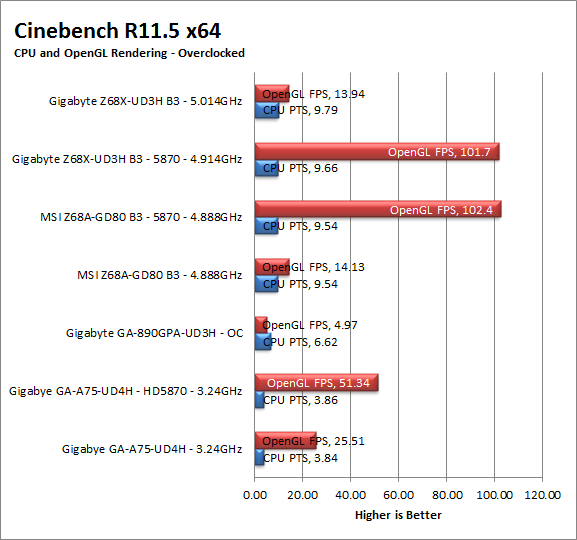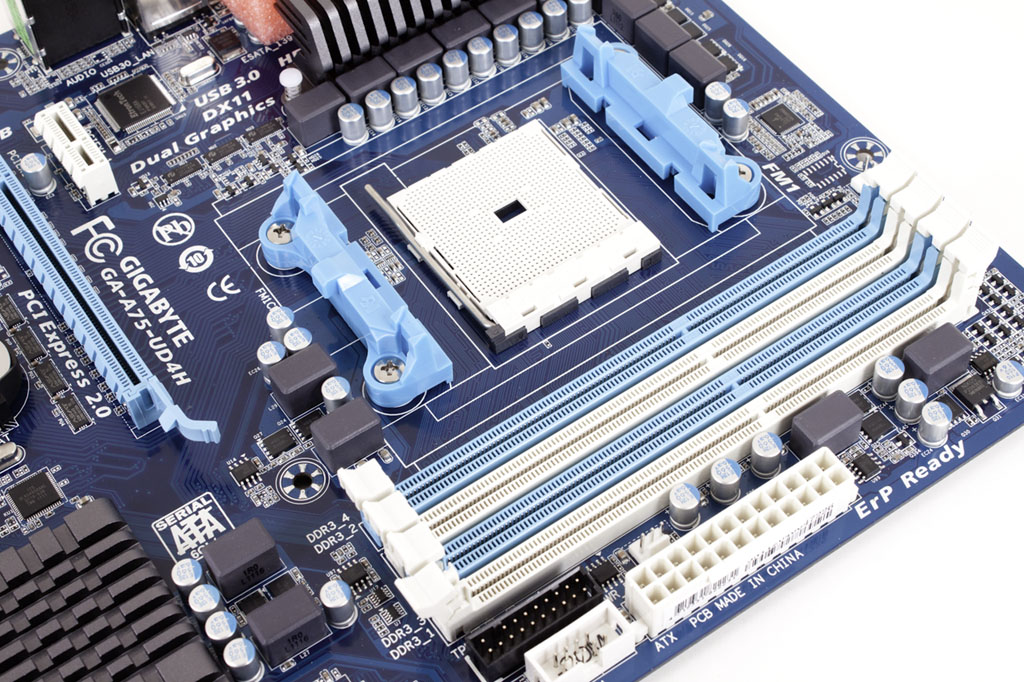Section II - Performance Tests, Synthetic
In this section of testing we cover the synthetics. These are tests that run a scripted sequence of internal APIs or that use another installed application to perform a series of scripted events. They are great in that they can provide reproducible results across various platforms. On the down side, synthetic tests can be fooled with driver tweaks and optimizations. In some cases it is necessary to rename the .exe file to something generic to discover if this is the case. In any event when this is needed (when a test shows a drastic difference in performance over the renamed exe) we will note this and show both results for comparison.
PCMark Vantage -
PCMark Vantage is a suite of tests designed to test the power of your computer. It runs task that range from productivity to gaming (DX9 only). It is a great test to identify potential problem areas with general performance on a system. It can also show how well a single component can increase or decrease system-wide performance. We run both the x86 and x64 PCMark Suites for testing.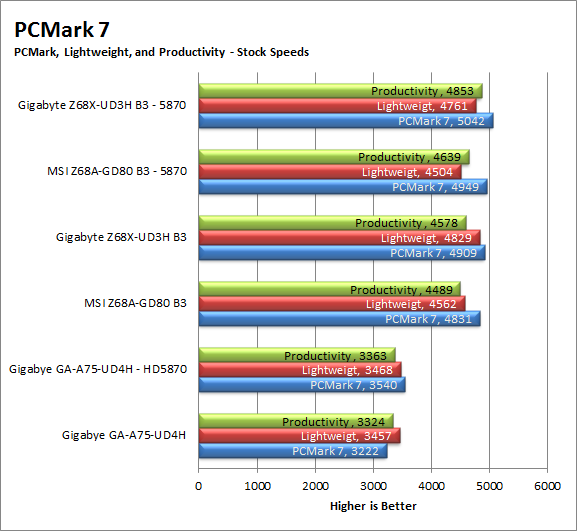
Now, the numbers here are going to put you off a bit on the A75-UD4H. That is until you take the other systems into consideration. The A75 is not that far behind Intel’s higher end CPU (Core i7 2600K) combined with the Z68 motherboard. Once you look at these in that perspective you get a better appreciation for the scores that the A75-UD4H pulled off. These numbers also confirm our suspicion that this board would be great for a general usage system.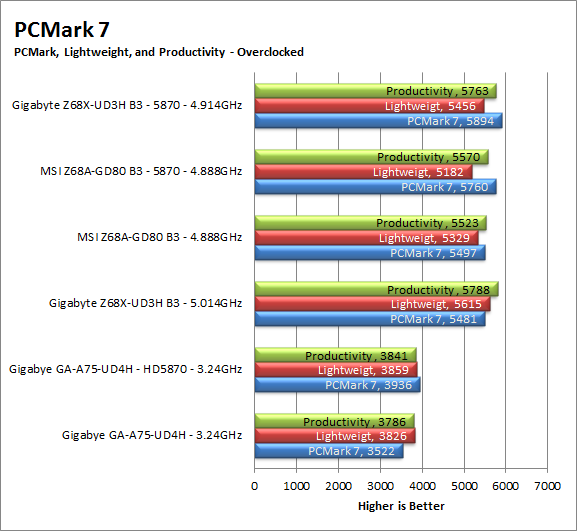
3DMark 11 -
3DMark 11 is the other Futuremark test that we run on our motherboards. This test simulates the typical tasks that a GPU (and system) would have to perform to provide you with a good gaming experience. It is based on the DX9, DX10 and DX11 engines but can only be installed on Windows Vista or later. The suite of tests covers DX9, DX10, and of course DX11 rendering; it also covers AI computations and physics. That’s right I said Physics the latest version of 3DMark uses a Havok physics engine. This removes the advantage that nVidia had with 3DMark Vantage. 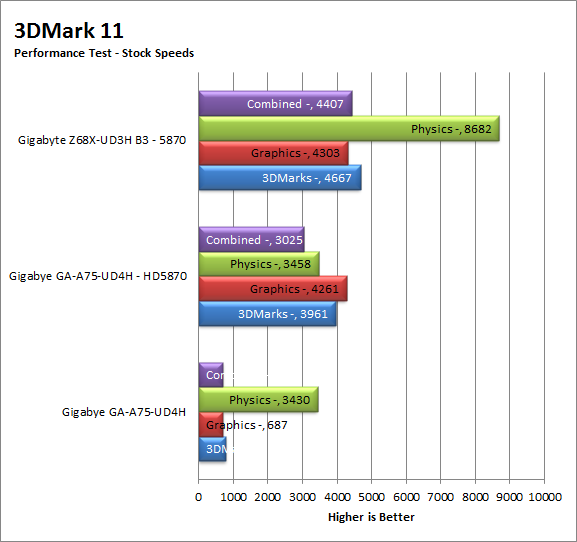
The scores here do not look so good do they? Well before you start to think poorly of the 3650 from AMD, just remember that this is the first CPU based IGP that can run DX11 completely on its own. Meanwhile Intel’s Sandy Bridge CPUs are stuck at DX10.1. You might hear that this does not matter to the market that these are being presented to, but you would not be correct. 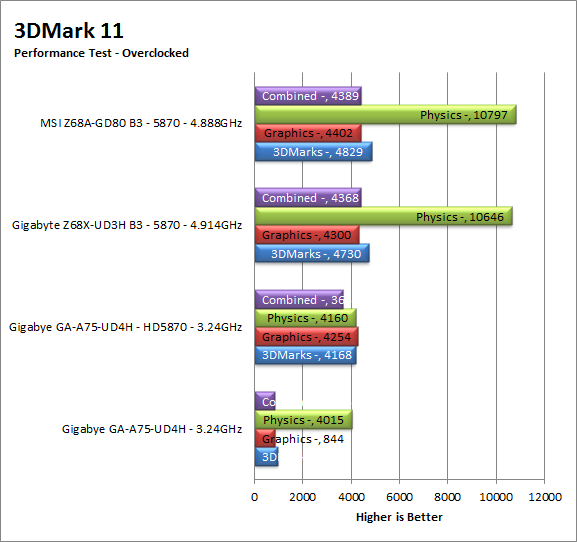
HyperPi 0.99b -
HyperPi is a front end application that allows you to easily run multiple instances of the SuperPi application. SuperPi, for those that are not familiar with it, is an application that measures the time it takes to calculate the number Pi out to as many as 32 million places. This calculation is then checked and run multiple times (up to 24 for a 32M run). This test stresses the CPU, Memory and HDD as data is handed off between the three. If there is a weak link, HyperPi will show it. For our testing we run the 32M test on as many cores (and threads) as the CPU has available. The slowest CPU time is then recorded. 
When we saw the slower memory performance numbers we knew that our HyperPi testing would be affected. Simply put, you need some very good memory bandwidth to keep the SuperPi calculations flowing. If you cannot buffer these to memory fast enough you are going to slow down dramatically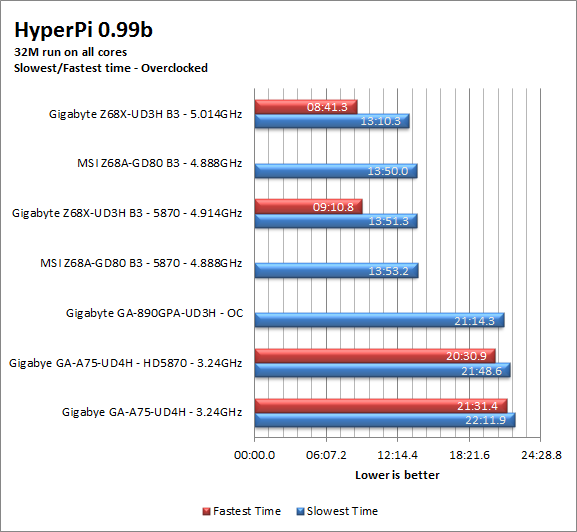
Cinebench R11.5 -
Cinebench R11.5 is the 11th release of Maxon’s rendering test. This test is based off of the Cinema 4D engine, which is one of the industry standard tools for digital animation. It is a powerful product with many different modules that can be “plugged” into it to increase its effectiveness. With Cinebench you get to see how your computer would do using this application. There are two tests; one tests the CPU’s ability to render an image across multiple cores or threads. The other tests your systems ability to handle OpenGL based rendering. 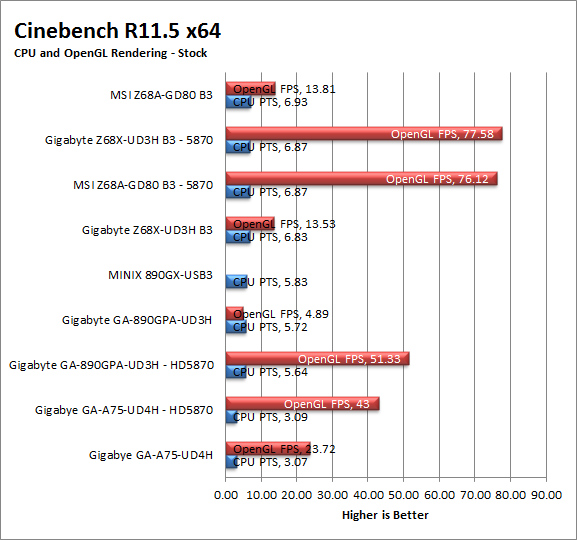
Well, we know that you will not be buying an A75/A6-3650 for rendering. The scores here are not impressive, but then again heavy content creation is not what this board and CPU combination are for.
